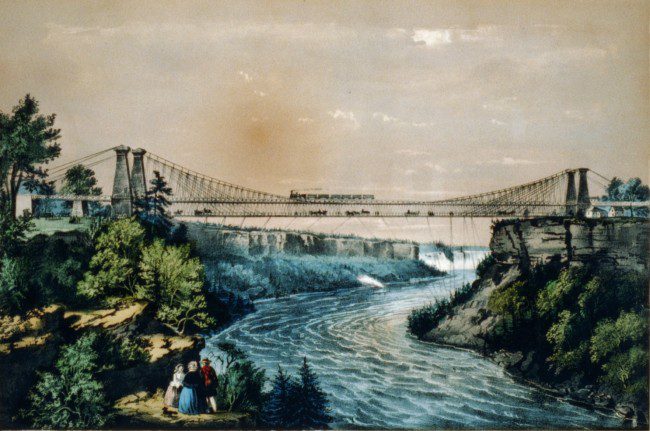Inducted 2001
In 1853, the Grand Trunk Railway wanted to build a suspension bridge across the Niagara River. The conception, development and construction of the railway suspension bridge over the Niagara River were by John A. Roebling, who went on to design the Brooklyn Bridge of New York.
There are two stone pylons at either end to support four iron cables, with the railway deck above carriage floors. After four years of work and the death of two workers in 1854, the $450,000 Suspension Bridge was opened on March 8, 1855. The first train to cross the bridge was the London, which weighed 23 tons, more than most trains at the time. The bridge carried the Great Western Railway and the Erie & Ontario Railroad trains. For the next 25 years, an average of 25 trains a week crossed the bridge.
The original suspension bridge lasted from 1855-1897. The decision was made to renovate the bridge to assure safe operation with the increased heavier loads on trains, more crossings and larger trains. Leiffert L. Buck, an American engineer, was hired to handle the design of the new bridge. It was made stronger with steel (instead of wood,) slender pylons, steel beams and trusses. These changes were completed by 1886 with little disruption to ongoing railway traffic.


